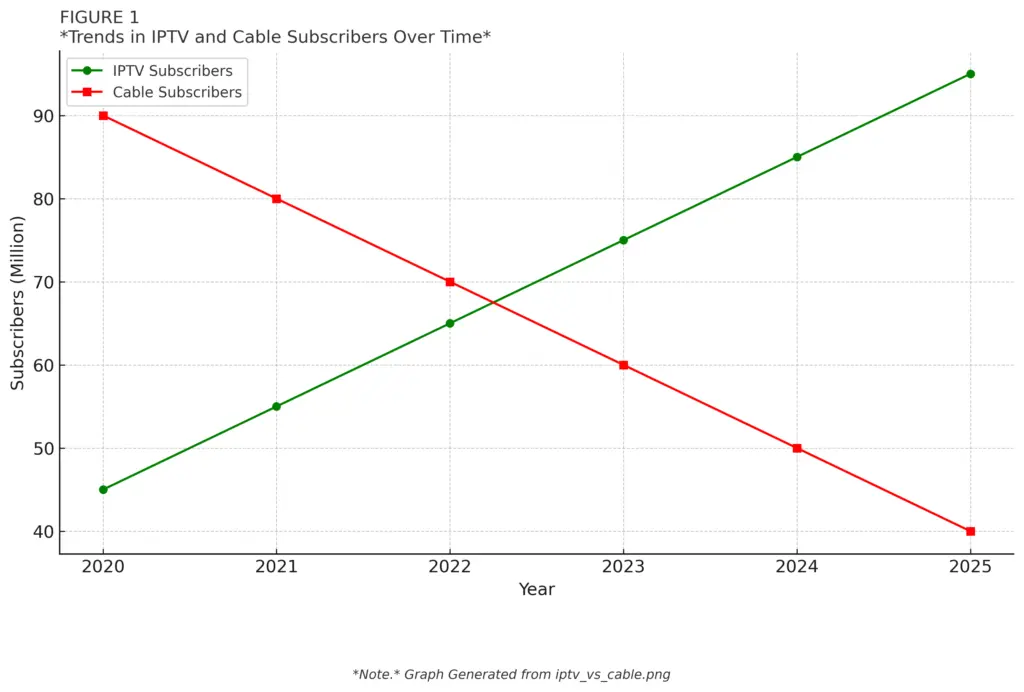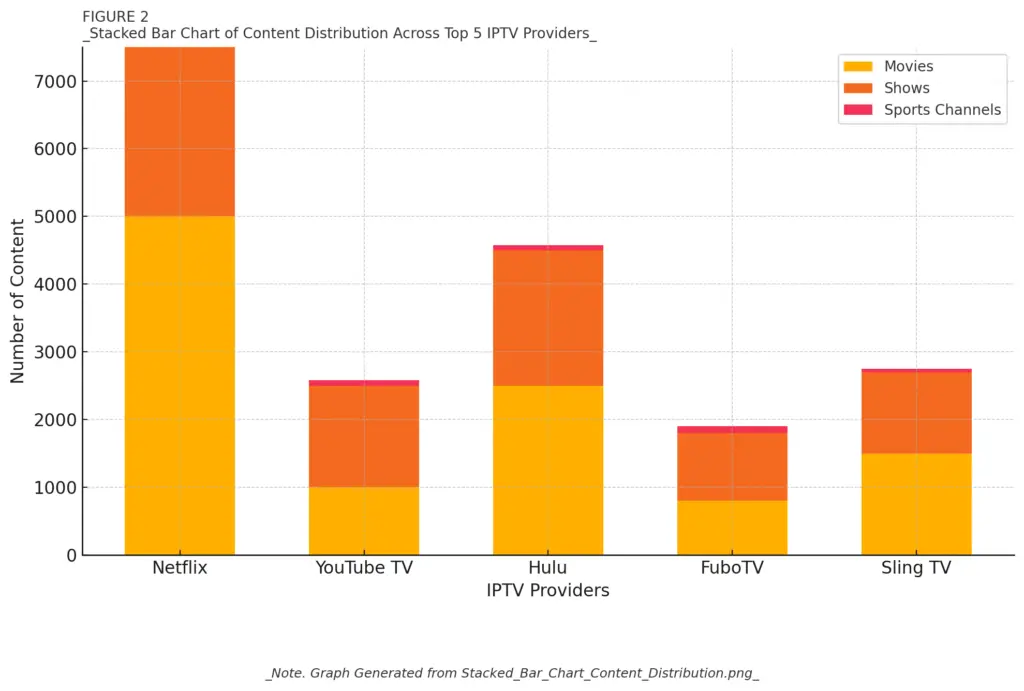
In the rapidly evolving home entertainment landscape, America IPTV has emerged as a dominant force, revolutionizing how Americans consume their favorite content in 2025. As traditional cable subscriptions continue declining, America IPTV services have captured viewers’ attention nationwide by offering unprecedented flexibility, extensive content libraries, and cost-effective streaming solutions. This transformative shift in viewing habits represents a fundamental change in how entertainment reaches our screens. America IPTV allows viewers to access their preferred shows, movies, and live broadcasts anytime and anywhere.
The convenience of streaming through America IPTV has become particularly appealing to modern consumers who demand personalized viewing experiences and freedom from rigid cable schedules. The economic advantages have proven equally compelling, with many households discovering significant savings after transitioning from conventional cable packages to America IPTV alternatives. This technological evolution has changed how we consume media and reshaped the entire entertainment industry landscape. 🚀

(Note. Line graph showing IPTV subscriber growth increasing from 45 million in 2020 to 95 million in 2025, while traditional cable subscribers declining from 90 million to 40 million during the same period, with a crossover point occurring in mid-2023)
The dramatic surge in IPTV adoption reflects a broader shift toward digital streaming solutions, marking a new era in television consumption where convenience, customization, and cost-effectiveness reign supreme.
Internet Protocol Television (IPTV) represents a revolutionary advancement in consuming television content, fundamentally transforming the traditional broadcasting landscape. Unlike conventional cable or satellite TV, America IPTV delivers content through Internet Protocol networks, enabling a more flexible and interactive viewing experience. The technology utilizes a complex infrastructure of servers, content delivery networks (CDNs), and streaming protocols to ensure seamless content delivery to end users.
The core infrastructure of America IPTV consists of video headend systems that process and encode content, middleware platforms that manage user interactions, and sophisticated content delivery networks that optimize streaming performance. Modern America IPTV systems employ adaptive bitrate streaming, automatically adjusting video quality based on the viewer’s internet connection, ensuring uninterrupted playback even during network fluctuations.
IPTV services typically fall into three categories, catering to different viewing preferences and needs. Live TV streaming remains the cornerstone of IPTV services, offering real-time access to broadcast channels, sports events, and news coverage. This category employs specialized streaming protocols like HLS (HTTP Live Streaming) and DASH (Dynamic Adaptive Streaming over HTTP) to minimize latency and maintain broadcast quality.
Video-on-demand (VOD) services represent another crucial component, providing access to vast libraries of movies, TV shows, and other content available for instant streaming. Time-shifted media, the third category, includes features like catch-up TV and network DVR functionality, allowing viewers to watch content conveniently rather than adhering to traditional broadcast schedules.
The legal landscape of IPTV services requires careful consideration from both providers and consumers. Legitimate IPTV services operate with proper licensing agreements and content distribution rights, ensuring compliance with copyright laws and intellectual property regulations. These authorized providers invest in robust security measures, including digital rights management (DRM) systems and encryption protocols, to protect content from unauthorized access and distribution.
Choosing legitimate IPTV services ensures legal compliance and provides users with reliable service quality, regular updates, and customer support. Authorized providers maintain professional relationships with content creators and broadcasters, guaranteeing a stable and high-quality streaming experience while supporting the entertainment industry’s sustainable growth.
When selecting an American IPTV service in 2025, content variety and quality are paramount in making an informed decision. The leading providers have established libraries encompassing live TV channels, on-demand content, and specialized programming. Premium services now offer comprehensive packages that include major network broadcasts, premium movie channels, and exclusive sports coverage. Regional programming has become increasingly important, with providers incorporating local channels and region-specific content to cater to diverse viewer preferences across different time zones and geographical areas.
The evolution of content delivery has led to specialized packages targeting specific viewer interests, from entertainment bundles focusing on movies and TV shows to dedicated sports packages covering major leagues and international competitions.

(Note. Stacked bar chart showing content distribution across top 5 IPTV providers – Netflix: 5000 movies, 2500 shows, 0 sports; YouTube TV: 1000 movies, 1500 shows, 85 sports channels; Hulu: 2500 movies, 2000 shows, 75 sports channels; FuboTV: 800 movies, 1000 shows, 100 sports channels; Sling TV: 1500 movies, 1200 shows, 50 sports channels)
As content quality improves, the technical requirements for optimal IPTV streaming have become more demanding. For seamless 4K streaming, a minimum internet connection speed of 25 Mbps is recommended, while HD content requires at least 10 Mbps. Device compatibility remains crucial, with modern IPTV services supporting various platforms, including smart TVs, streaming devices like Roku and Amazon Fire Stick, mobile devices, and web browsers.
The quality of service depends significantly on the provider’s server infrastructure and content delivery network (CDN) capabilities. Most premium services now offer adaptive bitrate streaming, automatically adjusting video quality based on available bandwidth to prevent buffering. Additionally, providers have implemented advanced features such as cloud DVR functionality, multiple simultaneous streams, and cross-device synchronization to enhance the viewing experience. Users should consider their home network setup, including router capabilities and Wi-Fi coverage, to ensure optimal performance across all connected devices.
In the dynamic landscape of IPTV services in 2025, several providers have emerged as frontrunners in the American streaming market. These industry leaders have distinguished themselves through superior service quality, innovative features, and competitive pricing structures that cater to diverse viewer preferences.
The streaming quality landscape has evolved significantly, with leading IPTV providers investing heavily in infrastructure to deliver exceptional viewing experiences. Top-tier services now consistently offer 4K streaming capabilities with minimal buffering times, typically under 2 seconds for HD content. Service reliability has become a crucial differentiator, with the best providers maintaining impressive uptime rates exceeding 99.9%.
User experience metrics indicate that interface responsiveness and content discovery features are pivotal in subscriber satisfaction. Integrating AI-powered recommendations has enhanced content discovery, with users finding desired content 50% faster than traditional navigation methods.
Here’s a radar chart comparing key performance metrics across the top 5 IPTV providers: Netflix, YouTube TV, Hulu, FuboTV, and Sling TV based on critical streaming performance factors.
(
| Provider | Buffering Time (s) | Uptime (%) | Video Quality (1-10) | UI Response Time (ms) | Content Load Speed (s) | Stream Stability (1-10) |
|---|---|---|---|---|---|---|
| Netflix | 1.2s | 99.8% | 9.5 | 200ms | 1.5s | 9.2 |
| YouTube TV | 1.5s | 99.5% | 9.0 | 250ms | 1.8s | 8.9 |
| Hulu | 1.8s | 99.2% | 8.7 | 280ms | 2.0s | 8.5 |
| FuboTV | 1.6s | 99.3% | 9.2 | 260ms | 1.9s | 8.8 |
| Sling TV | 2.2s | 98.8% | 8.2 | 300ms | 2.3s | 8.0 |
A radar chart (spider chart) visually represents each IPTV provider’s strengths and weaknesses in the six key metrics.
The pricing landscape of IPTV services has become increasingly sophisticated in 2025, with providers adopting flexible subscription models to accommodate various viewing habits. Premium packages, offering comprehensive channel lineups with 4K content, typically range from $50 to $80 monthly. Mid-tier options, providing HD content and popular channels, are between $30 and $45 monthly. Entry-level packages, suitable for basic viewing needs, start at $20 monthly.
Most providers have introduced hybrid pricing models that combine traditional channel packages with on-demand content libraries. Value-added features such as multi-device streaming, cloud DVR capabilities, and premium sports packages are often available as add-ons, allowing subscribers to customize their entertainment experience according to their specific needs and budget constraints.
But the real question remains: Does this truly meet the needs of subscribers? The answer is no—because the demand for America IPTV has grown significantly. Unlike the limited offerings of traditional services, where you must subscribe to multiple platforms to access your desired content—leading to high costs—America IPTV provides an all-in-one solution.
That’s why we’ve introduced an exceptional IPTV service that delivers comprehensive content, extensive channel packages, and unlimited access to live sports, news, and local programming—all in one place. Best of all, our subscriptions are affordable and budget-friendly, ensuring premium entertainment without breaking the bank.
We invite you to explore and experience America IPTV today! 🎉🚀
Setting up your IPTV service requires careful attention to detail to ensure optimal streaming performance. Select a reliable VPN service to protect your privacy and bypass potential geo-restrictions. After securing your VPN, install it on your preferred streaming device, whether a Fire Stick, Android TV box, or smart TV.
The next crucial step is to configure your IPTV service credentials. Launch your chosen IPTV application, such as TiviMate, Smarters, or Perfect Player. Navigate to the settings menu and locate the playlist or M3U URL input section. Enter the credentials provided by your IPTV service provider, including the M3U playlist URL and EPG (Electronic Program Guide) information.
To optimize your streaming experience, adjust the buffer size in your IPTV app settings based on your internet speed. For connections above 100 Mbps, set the buffer to 5-10 seconds. For slower connections, increase the buffer time to prevent stuttering. Configure video quality settings according to your network capabilities, starting with 1080p for stable connections or dropping to 720p if experiencing lag.
For the best viewing experience, organize your channels into custom groups based on categories or preferences. Enable EPG synchronization to access up-to-date program information. Consider setting up channel favorites for quick access to your most-watched content. Regular maintenance includes clearing cache data monthly and updating your IPTV application when new versions become available. Remember to keep your VPN active during streaming sessions to maintain security and access to all available content.
As we navigate the evolving landscape of streaming entertainment in 2025, choosing the right American IPTV service has become increasingly crucial for cord-cutters seeking comprehensive content solutions. The key to making an informed decision is carefully evaluating service reliability, content variety, streaming quality, and pricing structures. Legal American IPTV providers have significantly improved their offerings, with enhanced features like cloud DVR, multi-device support, and 4K content becoming industry standards.
Looking ahead, we can expect further innovations in personalized content delivery, AI-driven recommendations, and seamless integration with smart home devices. While the America IPTV market continues to mature, consumers should prioritize legitimate services that offer transparent pricing and reliable customer support. The future of America IPTV streaming appears promising, with emerging technologies and expanding content libraries shaping an even more engaging viewing experience for subscribers worldwide.
We anticipate further content delivery and user experience advancements as the IPTV landscape evolves. Integrating augmented reality (AR) and virtual reality (VR) technologies may soon revolutionize how we interact with streaming content, offering immersive viewing experiences that blur the lines between traditional television and interactive entertainment. The ongoing development of 5G networks also promises to enhance mobile streaming capabilities, potentially leading to new forms of on-the-go content consumption.
The rise of IPTV has also sparked discussions about the future of content creation and distribution. As streaming platforms gain more influence, we may see a shift in how content is produced, with an increased focus on data-driven decision-making in programming choices. This could lead to more diverse and niche content offerings, catering to specific audience segments that traditional broadcasting models may have overlooked.
In conclusion, the IPTV revolution has fundamentally altered the entertainment landscape, offering viewers unprecedented control over their viewing experiences. As technology advances and consumer preferences evolve, the IPTV market is poised for continued growth and innovation. By staying informed about the latest developments and carefully considering their options, consumers can make the most of this dynamic and exciting era in home entertainment.